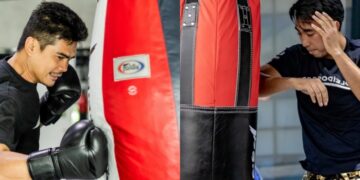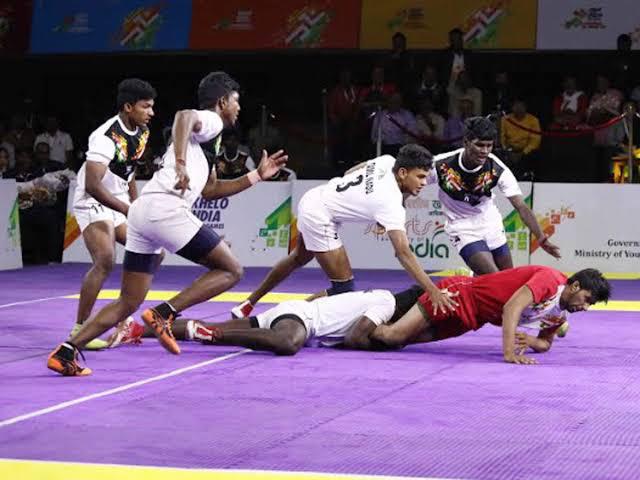
The countless chokes you learn in Brazilian Jiu-Jitsu are a massive part of what makes it such a fun martial art. While most BJJ techniques were developed to be performed on opponents wearing Gis, many work just as well in No-Gi situations, making them quite popular with mixed martial artists. This article will explore some of the most effective chokes that will make your opponents ‘sleepy’ if they don’t tap out quickly.
Best No-Gi Chokes For Mixed Martial Arts
There are two main types of chokes in BJJ: Air and blood. Air chokes cut off an opponent’s air supply, as their name implies, while blood chokes cut off the blood supply to the brain. Blood chokes are generally viewed as the more powerful type of choke since they take less time for the person on the receiving end to lose consciousness.
Some of the most effective chokes in modern MMA include:
1) The Guillotine Choke
Here’s one of the OG techniques in BJJ. It’s a versatile technique that can be performed from various positions, such as while standing, front top turtle, bottom guard, and top mount. It’s a particularly effective technique in self-defense situations since the average person naturally gives you their neck on a silver platter when shooting in for takedowns.
It’s a prevalent scenario in BJJ dojos. A new guy walks in and gets their neck caught in a guillotine on their first takedown attempt. The guillotine choke is typically available whenever an opponent ducks their head while trying to wrestle you to the ground.
Here’s how a common variation of the technique works:
- Wrap your near arm around your opponent’s neck while trapping their head with your torso, and grab your attacking arm with your other arm. The palm of your attacking arm should be facing you.
- Finish by bringing your arms toward your chest while driving your hips into your opponent. The key to making the technique effective is wrapping your attacking arm around your opponent’s neck before they get a chance to tuck their chin.
2) The Rear-Naked Choke
The rear-naked choke is arguably the most powerful martial arts technique ever created. Secure this technique on any living thing with a neck, and it’s going to sleep. The technique’s English name doesn’t do it justice. Its Brazilian name, “Mata Leo,” which translates to “lion killer,” is much more appropriate. You could really put a lion to sleep with the technique if it doesn’t rip you to shreds before you wrap your arms around its neck.
Here’s how to lock it in:
- The first thing you need to do is to secure your opponent’s back. You can do this by transitioning there from positions like the clinch, bottom side mount, or top mount.
- Secure your hooks once you have their backs or, better yet, a body triangle. If you really want to be cool like BJ Penn, you can trap one of your opponent’s arms with your legs before securing hooks or a body triangle. That way, they only have one arm with to defend themselves.
- Slide one of your arms under your opponent’s neck with your palm facing you. Grab your biceps or shoulders with your attacking arm and grab your other shoulder with your free arm. Bring your elbows together to finish the choke.
The rear-naked choke is particularly effective in MMA since strikes are allowed. Your goal inside a cage should be to take the top back mount position, flatten them out so they can’t escape, and bombard them with punches. It won’t take long for you to find an opportunity to wrap an arm around their neck.
3) The Anaconda Choke
Like the guillotine choke, the anaconda choke often opens up when defending against takedowns. You’re typically in a position to go for it after successfully defending against a takedown by sprawling since you usually end up in the front-headlock position or top turtle.
The mechanics of the anaconda are a lot like the rear-naked choke, but it’s secured from a different angle.
Here’s how to perform the technique:
- Trap your opponent’s head and arm in a headlock as you stuff their takedown attempt.
- Thread your arm under your opponent’s far side armpit and neck. Lock your attacking arm the same way you would with a rear-naked choke and turn on the side of the arm you weaved your attacking arm under.
- Squeeze your elbows together to finish the technique, and work your legs toward your opponent to add more pressure.
4) The Arm-Triangle Choke
The arm triangle is another powerful choking technique that can be secured from many positions like a clinch, bottom guard, side control, and top mount. It’s most powerful when performed from side control since you get to put your weight into the finish.
Here’s how the arm triangle works:
- Isolate your opponent’s arm and trap it against their head and yours as you wrap your arm around their neck and their trapped arm.
- Bring your elbows together to finish the technique, and try to flatten your body on the ground to add more pressure if you’re in side control.
5) The D’Arce Choke
This technique is often confused with the anaconda because of their similarities, with the main difference being the D’arce involves attacking your opponent’s head directly. In contrast, the anaconda requires weaving your arm underneath your opponent’s armpit.
Here’s how to apply a D’arce choke:
- From the top turtle position, wrap your arm around your opponent’s neck and grab it with your other arm as if you’re trying to lock up a rear-naked choke.
- Slide to your back while locking your arms and drive your hips toward your opponent as you finish the choke.
Anyone Can Get Choked Out
In MMA, anything can happen. With the added challenge of mastering both wrestling and grappling, knowing your no-gi chokes can give you a serious edge. When technique meets timing, it’s simple: your opponents either tap… or nap!
You may also like:
Wrestling For Non-Wrestlers: Essential Takedown Strategies For MMA And BJJ Practitioners
Hard sparring sessions in martial arts can make you feel like you’ve just walked through a brick wall. You’ve given it your all, and your muscles are sending you a strongly worded memo saying that…
Nothing feels as rewarding as landing a well-executed strike that finishes the match or secures a win. The knockout is the crème de la crème of combat sports like mixed martial arts (MMA), Muay Thai,…
Many strikers don’t think they need to learn how to wrestle until they feel what it’s like to battle a strong grappler. Striking and grappling are the two opposite ends of martial arts training, and…
“Punch a black belt in the face; he becomes a brown belt. Punch him again, purple…” These are the words of Carlson Gracie, one of the pioneers of mixed martial arts. Playing guard in Brazilian…
Have you ever heard that voice that says, “Maybe I should get my backside off the couch and do something cool?” MMA could be the fun new activity you’re looking for. No, training won’t turn…
Brazilian Jiu-Jitsu (BJJ) quickly went from an almost unknown fighting style to one of the most popular combat styles worldwide because of how effective it was during the early days of mixed martial arts (MMA),…
Martial arts legends can inspire children—or anyone else—to dedicate themselves to learning more about these ancient arts. Children typically have short attention spans, but they’ll sit through exciting stories about warriors battling tigers with bare…
Solo activities are wonderful for those looking to get out and explore the city on their own. Perhaps you just want to indulge in a good workout session to escape from your daily routine and…
Boxing is often referred to as “the sweet science” because it is more than just throwing punches. Boxing is about precision, timing, and strategy to scientifically defeat the opponent. While fundamental techniques are the core…
BJJ constantly evolves with new techniques and forgotten ones being rediscovered. While classic submissions are staples in every grappler’s arsenal, many lesser-used techniques can catch opponents off guard and open up new attacking opportunities. Focusing…
A loss during competition sometimes feels like a sucker punch to your ego. One minute, you’re on top of the world and questioning every decision you made during the match—and maybe even in life—the next…
Roadwork has been the main cardiovascular training activity for martial artists in styles like Kickboxing, Muay Thai, and Boxing. But is it really the most effective way to improve your cardio for martial arts? Or…





































